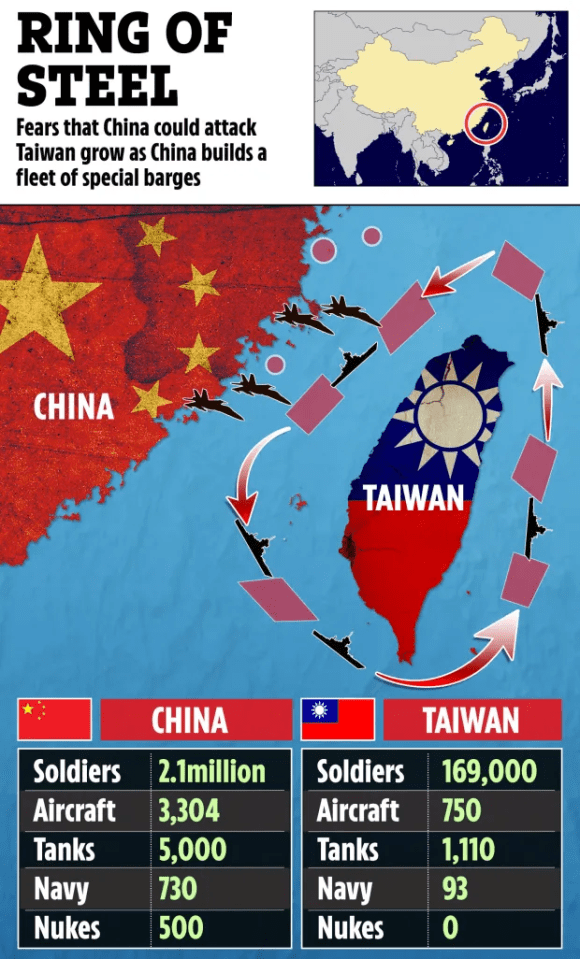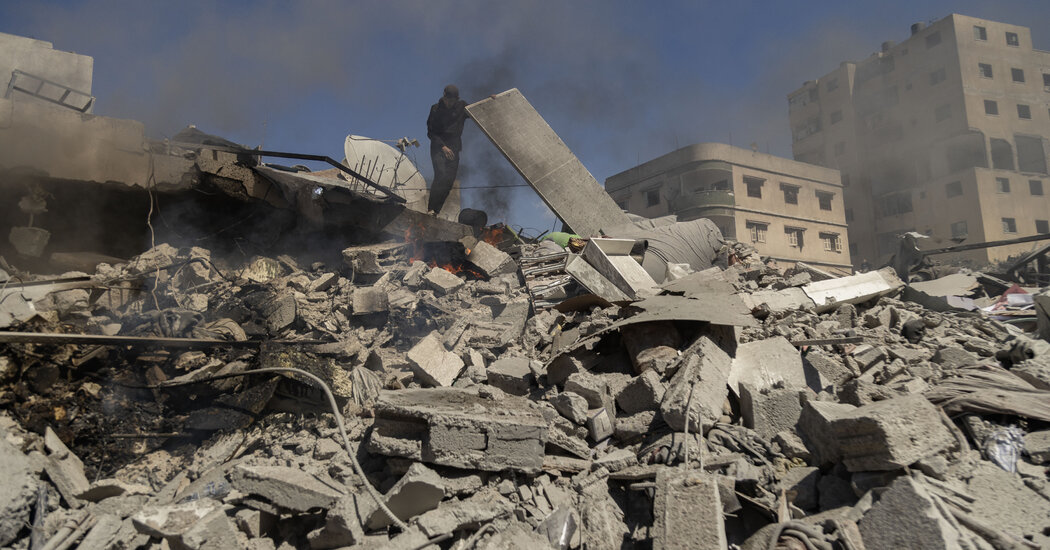China Encircles Taiwan with Military Drills Involving 19 Warships and 50 Aircraft
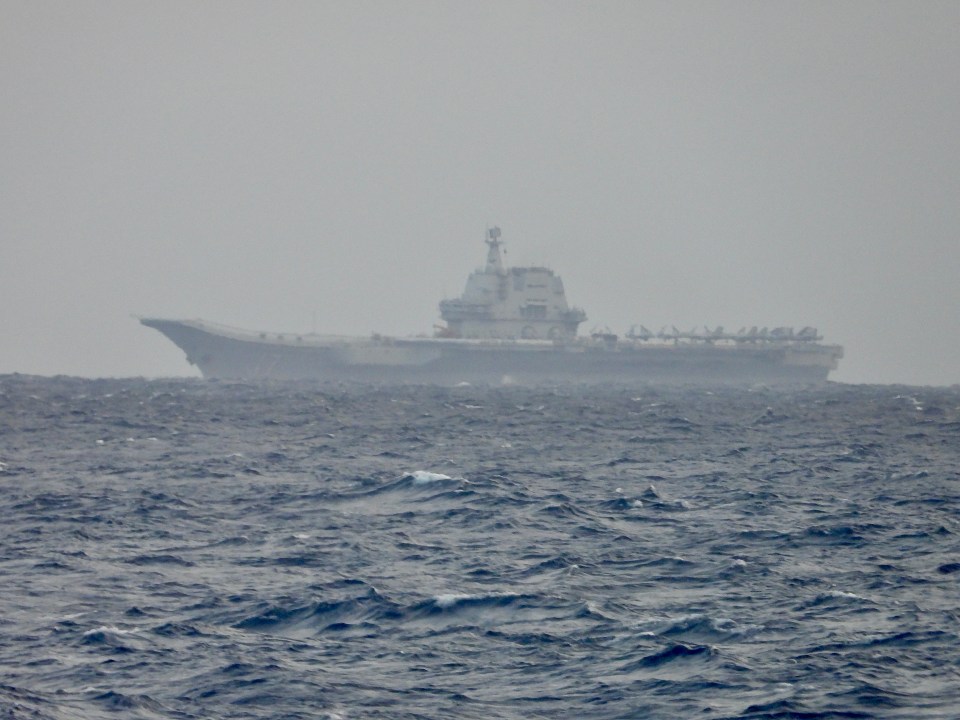
In a provocative show of force, China has initiated a new series of military exercises involving its army, navy, and rocket forces, effectively surrounding Taiwan. This move has been characterized by Beijing as a “stern warning” and a “powerful deterrent” against any attempts at Taiwanese independence. Notably, the Chinese aircraft carrier Shandong was observed operating near Taiwan during these recent drills.
As part of this display, the Chinese military released a startling graphic depicting Taiwan with the caption ‘Closing In’, emphasizing their military posture. In response to these aggressive maneuvers, Taiwan’s Air Force scrambled its Mirage 2000 fighter jets, stationed at Hsinchu Airbase, to demonstrate readiness against potential threats.
Furthermore, the Chinese military escalated tensions by labeling Taiwanese President Lai Ching-Te a “parasite.” Today, Taiwan reported detecting at least 19 Chinese warships, including the prominent Shandong carrier, patrolling dangerously close to its shores. This represents the highest concentration of Chinese naval vessels recorded in a single day since May of the previous year.
Senior Colonel Shi Yi, a spokesperson for the Chinese military’s Eastern Theater Command, announced the commencement of “sea-air combat-readiness patrols.” He elaborated that these operations are designed to create a “joint seizure of comprehensive superiority,” targeting maritime and ground objectives while establishing blockades over strategic areas and sea routes. Additionally, the military’s imagery included the ominous phrase “Taiwan separatists courting disaster upon themselves.”
Reintegrating Taiwan with mainland China has long been a critical objective for President Xi Jinping. Recent military actions indicate his readiness to use force if necessary. In a bold counteraction to these drills, Taiwan has deployed its own aircraft and naval vessels, alongside land-based missile systems, and accused Beijing of being the world’s “biggest troublemaker.”
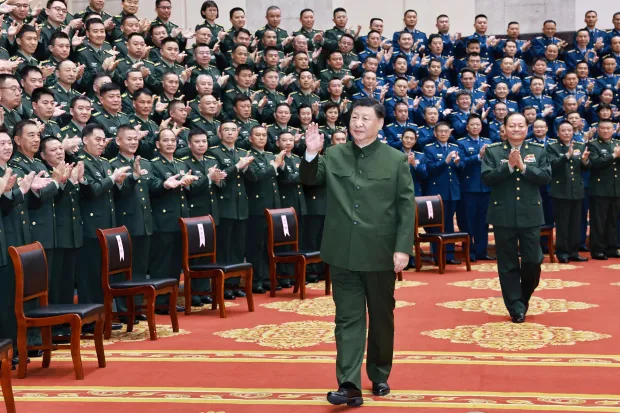
Why Does China Seek to Control Taiwan?
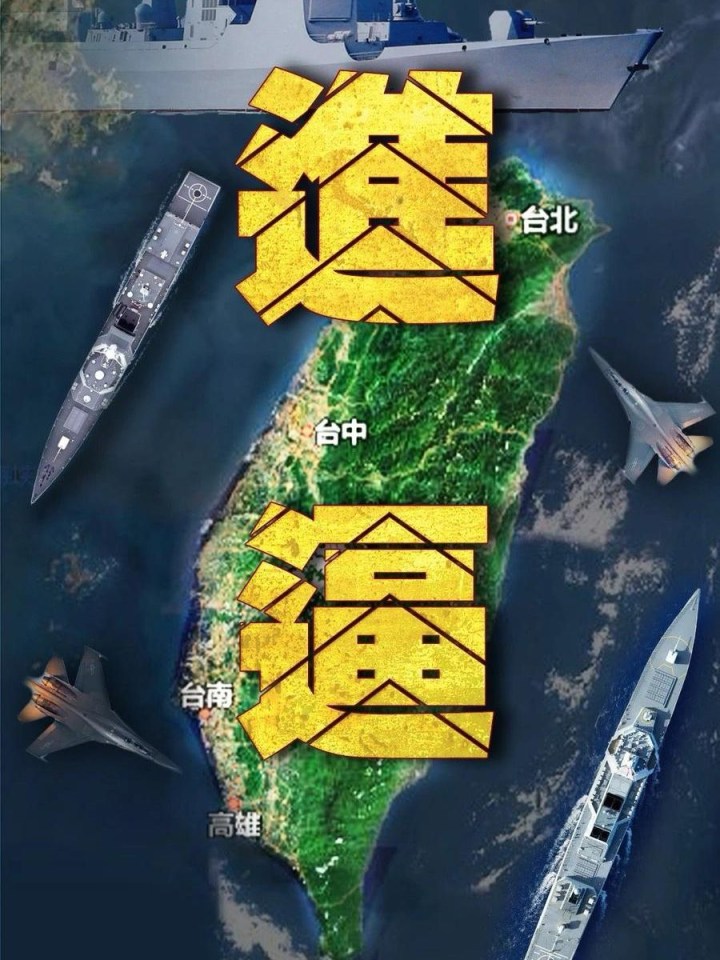
Taiwan asserts its independence, having separated from mainland China following a civil war in 1949. However, China maintains that Taiwan is an integral part of its territory, destined for reunification, and has not dismissed the possibility of using military force to reclaim the island.
The island, located roughly 100 miles from the southeastern coast of China, views itself as distinct from the mainland, boasting its own constitution and democratically elected leaders. Taiwan is strategically situated within the “first island chain,” a series of territories allied with the United States that are vital to Washington’s foreign policy in East Asia. This positioning also provides Taiwan an advantageous role in potentially hindering any Chinese military aggression towards the West.
Another significant factor driving China’s desire to reclaim Taiwan is the island’s robust economy. Should China successfully take control, it could enhance its ability to project military power across the western Pacific and compete with the United States, particularly given that a substantial portion of the world’s electronics production is based in Taiwan. This would grant Beijing dominance over a key sector that underpins the global economy.
While China professes peaceful intentions, President Xi Jinping has issued veiled threats towards Taiwan. In his New Year’s address earlier this year, Xi claimed that the people on both sides of the Taiwan Strait are “one family.” He has previously dismissed Taiwan’s independence efforts as futile, asserting that reunification with Beijing is a “historical inevitability.”
Total Blockade, Air Blitz & Island Grab: Three Strategies for Potential Chinese Aggression
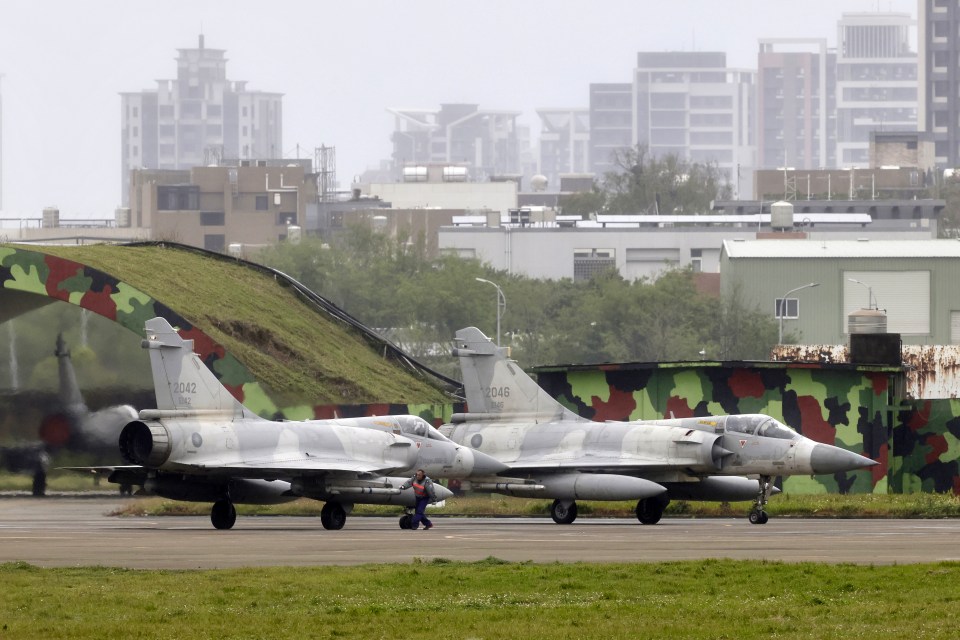
By Sayan Bose, Foreign News Reporter
With a formidable military, advanced warfare capabilities, and a fracturing Western response, experts warn that Xi Jinping may feel emboldened to pursue military action against Taiwan. Should China decide to initiate an attack, it is feared they would employ a coordinated strategy involving three primary military tactics that could devastate the island.
Defense analysts suggest that the current geopolitical climate presents an “ideal moment” for Xi’s long-standing ambition to reunify Taiwan with the mainland, with potential military action anticipated as early as 2027. Professor Ashok Swain, a peace and security scholar at Uppsala University in Sweden, indicated that China could launch a full-scale invasion, stating, “Global politics have shifted dramatically in recent months… the manner in which the United States is managing the situation in Ukraine provides a certain level of comfort to Xi.”
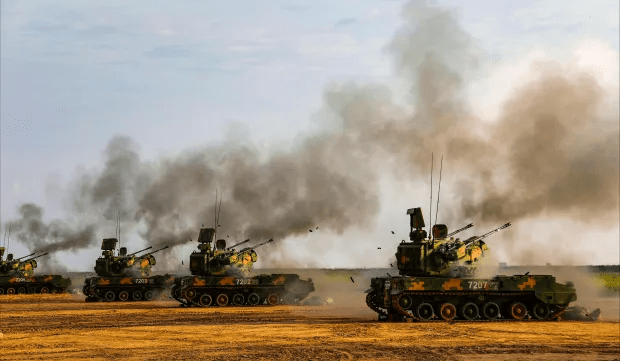
Swain envisions a scenario where China might commence an extensive air assault to incapacitate Taiwan’s defenses while simultaneously encircling the island with naval forces. This synchronized approach would aim to preclude an effective response from Taiwanese military forces and limit the time available for Western nations to intervene.
China could also consider seizing control of one or more of the islands surrounding Taiwan’s main territory to test the waters regarding Western responses. Any reaction that falls short of military backing could embolden Xi to escalate further, drawing parallels to Putin’s annexation of Crimea in 2014.
The third potential strategy involves establishing a comprehensive blockade. Military experts predict that China would begin by tightening restrictions on Taiwan through naval blockades, a tactic that has been part of their military exercises for years. An effective sea and air blockade could halt vital exports and sever Taiwan’s support from the U.S. and Japan, potentially crippling the island economically, financially, and operationally if Beijing extends its military presence.
For years, China has continuously threatened Taiwan with military drills aimed at intimidation, and this aggressive posture has intensified significantly in recent months. President Xi Jinping has consistently reiterated his commitment to taking Taiwan ‘by force if necessary.’
